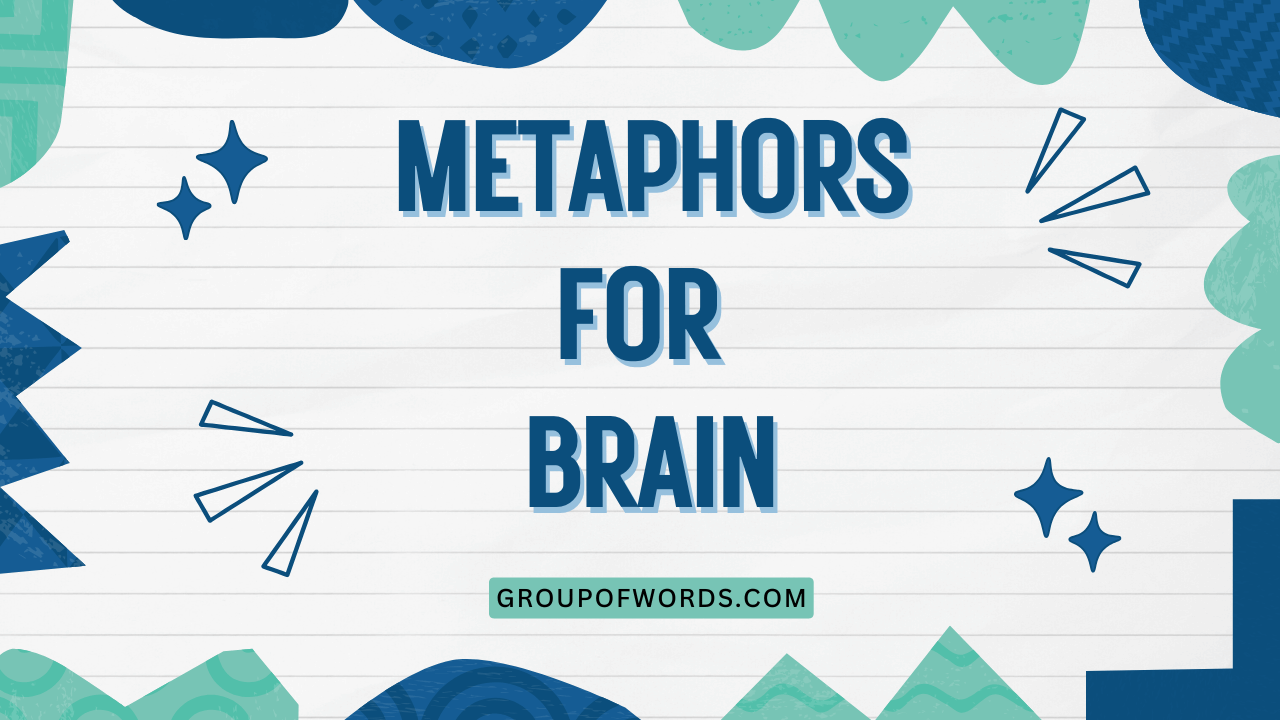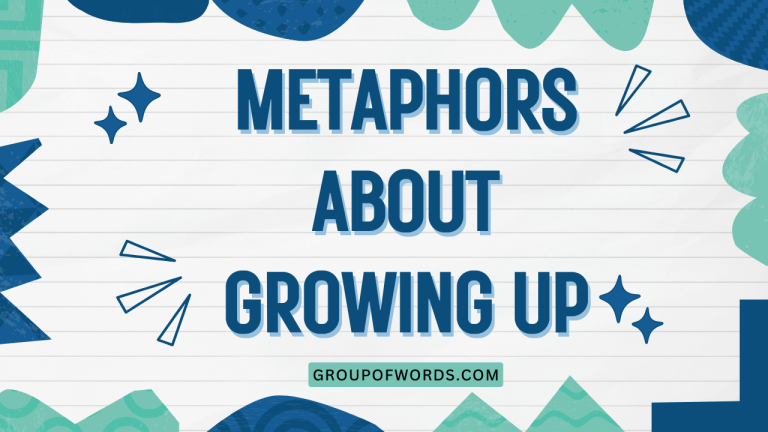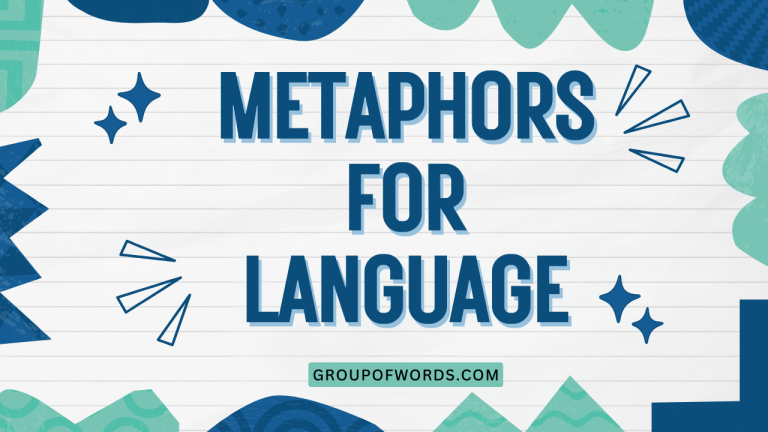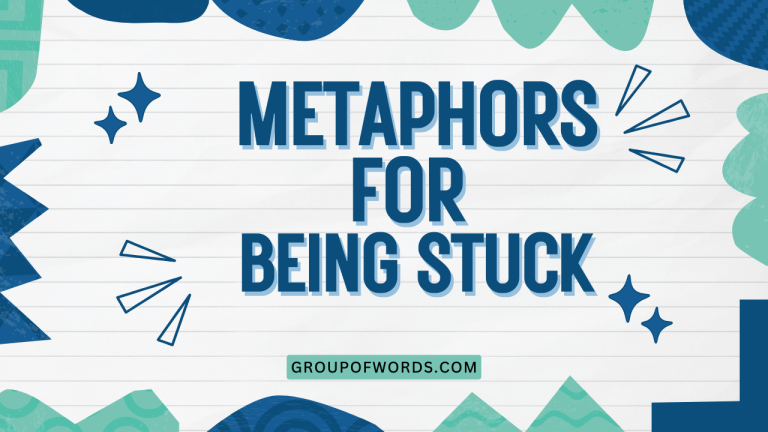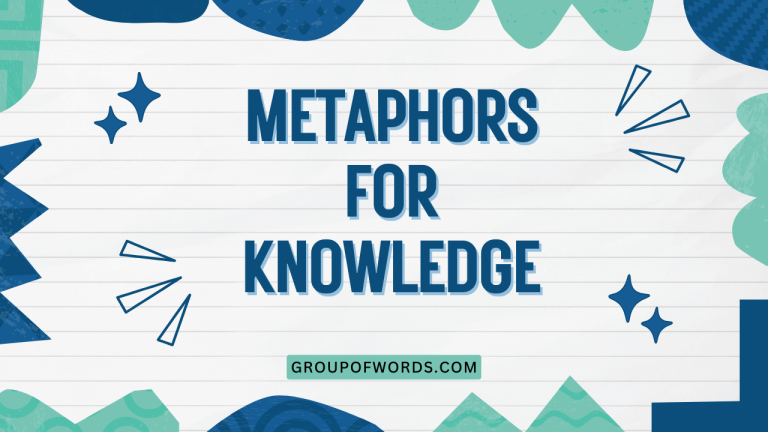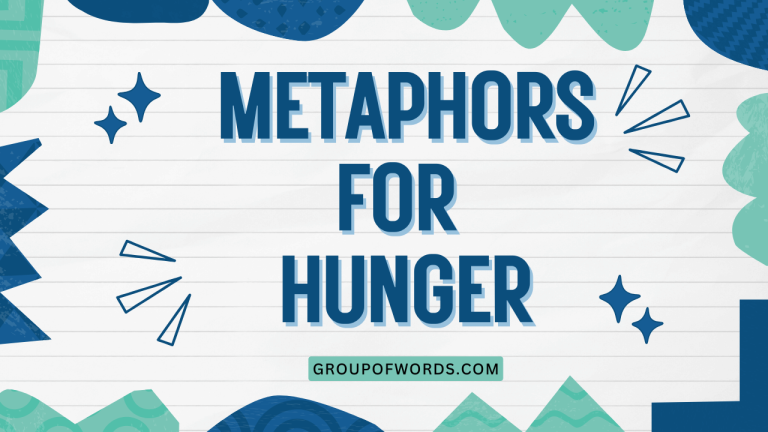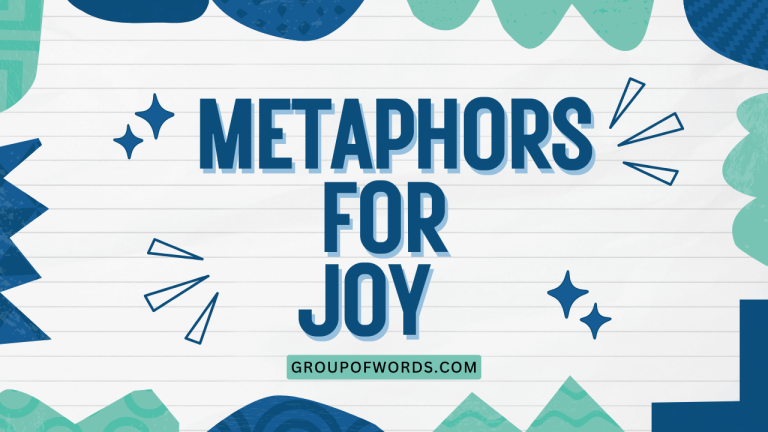Metaphors for the Brain: Understanding Cognitive Function
Metaphors are powerful tools in language, allowing us to understand complex concepts by relating them to more familiar ones. When it comes to the brain, a notoriously intricate organ, metaphors become essential for grasping its functions and capabilities.
This article explores various metaphors used to describe the brain, their implications, and how they shape our understanding of cognition. Whether you’re an English language learner, a student of cognitive science, or simply curious about the mind, this guide will provide a comprehensive overview of brain metaphors and their role in language and thought.
Understanding brain metaphors enhances your grasp of English grammar by illustrating how abstract nouns (referring to brain functions) are used in figurative language. Recognizing these metaphors improves reading comprehension and allows for more nuanced communication.
By exploring these metaphors, you will deepen your understanding of how language shapes our perception of complex scientific concepts.
Table of Contents
- Introduction
- Definition of a Brain Metaphor
- Structural Breakdown of Brain Metaphors
- Types and Categories of Brain Metaphors
- Examples of Brain Metaphors
- Usage Rules for Brain Metaphors
- Common Mistakes with Brain Metaphors
- Practice Exercises
- Advanced Topics in Brain Metaphors
- Frequently Asked Questions
- Conclusion
Definition of a Brain Metaphor
A brain metaphor is a figure of speech that uses an analogy to describe the brain’s functions, structure, or capabilities in terms of something else. It’s a way of making the abstract and complex nature of the brain more understandable by relating it to something more concrete and familiar.
These metaphors are not literal descriptions but rather illustrative comparisons that highlight certain aspects of the brain while simplifying others. The function of a brain metaphor is primarily explanatory, helping people grasp cognitive processes without delving into technical details.
It aids in communication, education, and even scientific theorizing.
Brain metaphors can be found in various contexts, from everyday conversations to scientific literature. In casual discussions, people might say “My brain is fried” to express mental exhaustion.
In psychology, the brain might be described as an “information processor.” In neuroscience, the “neural network” metaphor is used to model brain activity. These metaphors are powerful tools for communicating complex ideas, but it is important to remember that they are simplifications and should not be taken as literal representations of the brain.
Structural Breakdown of Brain Metaphors
Brain metaphors typically consist of two main elements: the target (the brain itself) and the source (the concept used to describe the brain). The source provides a framework for understanding the target. The effectiveness of a metaphor depends on the similarities perceived between the source and the target. A good brain metaphor highlights relevant aspects of the brain while minimizing misleading associations. For example, the “brain as a computer” metaphor emphasizes information processing but can be misleading if it suggests that the brain operates solely on sequential logic.
The structure of a brain metaphor can be further analyzed by identifying the specific features of the source that are mapped onto the target. For instance, in the “brain as a library” metaphor, the source features might include books (representing memories), shelves (representing storage areas), and a librarian (representing retrieval mechanisms).
Each of these features is mapped onto corresponding aspects of the brain. The strength of a metaphor lies in how well these mappings align with our understanding of brain function.
Stronger mappings lead to greater clarity and insight, while weaker mappings can lead to confusion or misinterpretation.
Types and Categories of Brain Metaphors
Brain metaphors can be categorized based on the type of concept used as the source. Here are some common categories:
The Brain as a Computer
This is one of the most prevalent metaphors, comparing the brain to a computer in terms of information processing, storage, and retrieval. The brain’s neurons are likened to circuits, and mental processes are seen as computations.
The advantage of this metaphor is its emphasis on the brain’s ability to process information systematically. However, it can be misleading because the brain is far more complex and adaptable than any computer.
The Brain as a Network
This metaphor emphasizes the interconnectedness of neurons and brain regions. The brain is seen as a complex network of nodes (neurons) and connections (synapses), where activity in one area can influence activity in other areas.
This metaphor is particularly useful for understanding how different parts of the brain work together to produce complex behaviors. It highlights the brain’s distributed processing capabilities, where information is processed across multiple regions simultaneously.
This metaphor captures the dynamic and interactive nature of the brain better than the computer metaphor.
The Brain as a Library
This metaphor focuses on the brain’s capacity to store and retrieve vast amounts of information. Memories are likened to books, and the brain is seen as an organized system for cataloging and accessing these memories.
This metaphor is helpful for understanding how the brain organizes information and how retrieval cues can trigger the recall of specific memories. However, it doesn’t fully capture the dynamic and reconstructive nature of memory, which is more flexible than simply pulling a book off a shelf.
The Brain as an Orchestra
This metaphor illustrates how different parts of the brain work together in a coordinated fashion. Each brain region is likened to an instrument in an orchestra, and the conductor represents the executive functions that coordinate the activity of these regions.
This metaphor highlights the importance of collaboration and timing in brain function. It emphasizes that the brain is not just a collection of independent parts but a unified system where each part contributes to the overall performance.
The Brain as a Hologram
This metaphor, less common but intriguing, suggests that information is distributed throughout the brain in a way similar to how information is stored in a hologram. In a hologram, each part contains information about the whole image.
Similarly, this metaphor suggests that even if parts of the brain are damaged, the remaining parts may still retain some information about the lost functions. This metaphor emphasizes the brain’s redundancy and resilience.
The Brain as a Garden
This metaphor focuses on the brain’s capacity for growth, learning, and adaptation. The brain is seen as a garden that needs to be cultivated through experience and learning.
Just as a garden needs watering, weeding, and pruning, the brain needs stimulation, attention, and the removal of negative influences. This metaphor highlights the importance of lifelong learning and the brain’s ability to change and adapt throughout life.
It also emphasizes the role of environment and experience in shaping brain development.
Examples of Brain Metaphors
The following tables provide examples of different brain metaphors and their specific usages. Each table focuses on a different type of metaphor, illustrating how it is used in various contexts.
Table 1: Examples of the Brain as a Computer Metaphor
This table illustrates the “brain as a computer” metaphor, showing how different aspects of brain function are compared to computer components and processes. It includes examples from everyday language, psychology, and neuroscience.
| Metaphor | Example Sentence | Explanation |
|---|---|---|
| Processing speed | “My brain is running slow today.” | Compares mental processing to the speed of a computer processor. |
| Memory storage | “I need to reboot my brain to remember.” | Relates memory retrieval to rebooting a computer to clear its memory. |
| Input/Output | “The brain processes sensory input.” | Describes how the brain receives and interprets sensory information like a computer receiving data. |
| Neural networks as circuits | “Neural circuits are wired together.” | Compares neural connections to the wiring of a computer circuit board. |
| Algorithm | “The brain uses algorithms to solve problems.” | Suggests that the brain follows step-by-step procedures to find solutions. |
| Data processing | “The brain crunches numbers.” | Relates mental calculations to a computer processing data. |
| Memory as hard drive | “My brain’s hard drive is full.” | Compares the brain’s memory capacity to the storage capacity of a hard drive. |
| Debugging | “I need to debug my thinking.” | Compares correcting errors in thought processes to debugging software. |
| Programming | “Experiences program the brain.” | Relates how experiences shape the brain to how programs are installed on a computer. |
| Software update | “Learning is like a software update for the brain.” | Suggests that new learning improves the brain’s functionality. |
| Central Processing Unit (CPU) | “The prefrontal cortex is the brain’s CPU.” | Comparing the prefrontal cortex to the central processing unit of a computer, emphasizing its role in executive functions. |
| Random Access Memory (RAM) | “Working memory is like the brain’s RAM.” | Relating working memory to RAM, highlighting its temporary storage and manipulation of information. |
| Operating System | “Cognitive control acts as the brain’s operating system.” | Comparing cognitive control to an operating system, emphasizing its role in managing and coordinating cognitive processes. |
| Firewall | “The brain has a firewall against overwhelming stimuli.” | Suggesting that the brain filters out excessive sensory input to protect itself, similar to a firewall protecting a computer. |
| Artificial Intelligence | “Understanding the brain is key to developing AI.” | Drawing parallels between understanding the brain and creating artificial intelligence, highlighting the brain’s complex information processing capabilities. |
| Neural Algorithm | “The brain runs complex neural algorithms.” | Comparing the brain’s processes to algorithms, emphasizing its structured and systematic approach to problem-solving. |
| Computer Model | “We can create a computer model of the brain.” | Suggesting that the brain can be simulated using computer models, highlighting its computational aspects. |
| Information Overload | “I’m experiencing information overload; my brain is crashing.” | Comparing the brain’s response to excessive information to a computer crashing due to overload. |
| Network Configuration | “The brain’s network configuration changes with learning.” | Relating the brain’s neural connections to a network configuration, emphasizing its adaptability and plasticity. |
| Central Server | “The brain acts as a central server for the body.” | Comparing the brain to a central server, highlighting its role in coordinating and controlling bodily functions. |
Table 2: Examples of the Brain as a Network Metaphor
This table presents examples of the “brain as a network” metaphor, illustrating how the interconnectedness of neurons and brain regions is emphasized. It includes examples from neurology, cognitive science, and general discussions about brain function.
| Metaphor | Example Sentence | Explanation |
|---|---|---|
| Neural pathways | “Learning strengthens neural pathways.” | Compares learning to strengthening connections in a network. |
| Interconnected nodes | “The brain is a network of interconnected nodes.” | Describes the brain as a system of interconnected neurons. |
| Connectivity | “Brain connectivity is crucial for cognitive function.” | Emphasizes the importance of connections between brain regions. |
| Distributed processing | “The brain uses distributed processing to solve problems.” | Highlights the brain’s ability to process information across multiple regions. |
| Synaptic connections | “Synaptic connections form the basis of the brain’s network.” | Describes how synapses create the connections in the neural network. |
| Neural web | “Thoughts travel through the brain’s neural web.” | Relates the flow of thoughts to the movement of information through a web. |
| Complex network | “The brain is a complex network of billions of neurons.” | Emphasizes the complexity of the brain’s interconnected system. |
| Network traffic | “The brain manages network traffic efficiently.” | Compares neural activity to the flow of data in a computer network. |
| Network hubs | “Certain brain regions act as network hubs.” | Identifies specific areas of the brain as central connection points. |
| Network disruption | “Brain damage can cause network disruption.” | Describes how damage can affect the brain’s interconnected system. |
| Communication network | “The brain is a vast communication network.” | Highlighting the brain’s role in transmitting information throughout the body. |
| Nodes and links | “The brain’s network consists of nodes and links.” | Describing the basic components of the brain’s neural network. |
| Interconnected pathways | “Memories are stored in interconnected pathways.” | Relating memory storage to the formation of pathways in the brain’s network. |
| Neural circuit | “A neural circuit processes specific types of information.” | Describing specific pathways in the brain that handle different cognitive tasks. |
| Network architecture | “The brain’s network architecture supports complex thought.” | Emphasizing how the structure of the brain’s network enables higher-level cognitive functions. |
| Synaptic pruning | “Synaptic pruning refines the brain’s network.” | Explaining how the brain streamlines its connections to improve efficiency. |
| Neural integration | “Neural integration combines information from different networks.” | Highlighting the brain’s ability to synthesize information from various sources. |
| Brain mapping | “Brain mapping reveals the brain’s network structure.” | Describing how techniques can visualize the connections within the brain. |
| Neural plasticity | “Neural plasticity allows the brain’s network to adapt.” | Emphasizing the brain’s ability to reorganize its connections in response to experience. |
| Dynamic network | “The brain is a dynamic network that constantly changes.” | Highlighting the brain’s ongoing adaptation and reorganization. |
| Network synchronization | “Network synchronization is essential for coordinated activity.” | Describing how different brain regions work together through synchronized neural activity. |
| Hierarchical network | “The brain operates as a hierarchical network.” | Suggesting that the brain’s network is organized into layers with different levels of complexity. |
| Feedback loops | “Feedback loops in the brain’s network regulate activity.” | Explaining how the brain uses feedback mechanisms to control neural processes. |
Table 3: Examples of the Brain as a Library Metaphor
This table provides examples of the “brain as a library” metaphor, illustrating how memory storage and retrieval are compared to organizing and accessing books in a library. It includes examples from memory research, educational contexts, and general discussions about learning.
| Metaphor | Example Sentence | Explanation |
|---|---|---|
| Memory storage | “The brain stores memories like books on shelves.” | Compares memories to books and the brain to a storage system. |
| Retrieval cues | “Retrieval cues help you find the right book in your brain’s library.” | Relates retrieval cues to finding specific memories in the brain. |
| Cataloging | “The brain catalogs memories efficiently.” | Describes how the brain organizes information for easy access. |
| Long-term storage | “Long-term memories are like books in the permanent collection.” | Compares long-term memories to items in a library’s permanent collection. |
| Forgotten memories | “Forgotten memories are like books lost in the stacks.” | Relates forgotten memories to items that are difficult to find. |
| Information retrieval | “The brain uses information retrieval strategies.” | Describes how the brain accesses stored information. |
| Memory organization | “The brain’s memory organization is complex.” | Emphasizes the complexity of how memories are structured. |
| Memory recall | “Memory recall is like checking out a book from the library.” | Relates the act of recalling a memory to borrowing a book. |
| Mental archive | “The brain is a vast mental archive.” | Describes the brain as a large repository of information. |
| Memory pathways | “Memory pathways lead to specific sections in the brain’s library.” | Compares memory pathways to directional signs in a library. |
| Indexing system | “The brain uses an indexing system to locate memories.” | Comparing the brain’s memory organization to a library’s index. |
| Mental catalog | “The brain maintains a mental catalog of experiences.” | Describing how the brain keeps track of past events. |
| Memory banks | “Memories are stored in different memory banks.” | Relating different types of memory to different sections of a library. |
| Information overload | “Information overload can clutter the brain’s library.” | Suggesting that too much information can make it difficult to find specific memories. |
| Memory consolidation | “Memory consolidation is like shelving a book properly.” | Describing how memories become more stable over time. |
| Retrieval process | “The retrieval process involves searching the brain’s library.” | Emphasizing the active process of accessing stored memories. |
| Emotional memories | “Emotional memories are like highlighted passages in a book.” | Suggesting that emotional memories are more easily recalled. |
| Memory decay | “Memory decay is like pages fading in a book.” | Comparing the gradual loss of memory to the deterioration of a book. |
| Contextual cues | “Contextual cues act as bookmarks in the brain’s library.” | Describing how environmental factors can trigger memory recall. |
| Memory retrieval | “Effective memory retrieval requires a well-organized brain library.” | Emphasizing the importance of organization for efficient recall. |
Table 4: Examples of the Brain as an Orchestra Metaphor
This table provides examples of the “brain as an orchestra” metaphor, illustrating how different brain regions work together in a coordinated fashion. It includes examples from neuroscience, cognitive psychology, and general discussions about teamwork and collaboration.
| Metaphor | Example Sentence | Explanation |
|---|---|---|
| Brain regions as instruments | “Different brain regions act like instruments in an orchestra.” | Compares brain regions to instruments, each with a specific role. |
| Executive functions as conductor | “Executive functions act as the conductor, coordinating brain activity.” | Relates executive functions to the conductor of an orchestra. |
| Coordination | “Brain coordination is essential for complex tasks.” | Emphasizes the importance of coordinated activity for cognitive function. |
| Harmony | “The brain achieves harmony through coordinated activity.” | Describes the brain’s ideal state as one of balanced and synchronized activity. |
| Brain rhythms | “Brain rhythms synchronize like instruments playing in time.” | Compares brain rhythms to musicians playing in sync. |
| Collaboration | “Brain regions collaborate to produce thoughts and actions.” | Highlights the cooperative nature of brain function. |
| Neural symphony | “The brain creates a neural symphony of activity.” | Describes the complex and coordinated activity of the brain. |
| Brain orchestra | “The brain orchestra plays different tunes for different tasks.” | Relates different cognitive tasks to different musical pieces. |
| Neural ensemble | “A neural ensemble works together like a musical ensemble.” | Highlights the coordinated activity of groups of neurons. |
| Cognitive harmony | “Cognitive harmony arises from synchronized brain activity.” | Describes the ideal state of balanced and coordinated cognitive function. |
| Conductor’s baton | “Attention is the conductor’s baton, guiding brain activity.” | Comparing attention to a conductor’s baton, emphasizing its role in directing neural processes. |
| Instrument sections | “Different cognitive functions are like different instrument sections.” | Relating various cognitive functions to distinct sections of an orchestra. |
| Synchronized performance | “Effective learning requires a synchronized performance of brain regions.” | Emphasizing the importance of coordination for optimal learning. |
| Harmonic resonance | “Harmonic resonance between brain areas enhances cognitive function.” | Suggesting that synchronized activity improves cognitive performance. |
| Orchestrated activity | “Orchestrated activity in the brain enables complex thought.” | Highlighting the coordinated nature of brain processes for higher-level cognition. |
| Neural score | “The brain follows a neural score to execute tasks.” | Comparing the brain’s processes to following a musical score to perform a task. |
| Brain ensemble | “The brain’s ensemble ensures seamless integration of information.” | Describing how different brain regions work together to integrate information effectively. |
| Cognitive symphony | “The cognitive symphony is disrupted in neurological disorders.” | Suggesting that neurological disorders interfere with the brain’s coordinated activity. |
| Mental concerto | “The brain performs a mental concerto during problem-solving.” | Comparing the brain’s problem-solving process to a complex musical composition. |
| Balanced orchestration | “Balanced orchestration of brain regions is key to mental health.” | Emphasizing the importance of balanced and coordinated activity for psychological well-being. |
Usage Rules for Brain Metaphors
When using brain metaphors, it’s important to keep the following rules in mind:
- Choose an appropriate metaphor: Select a metaphor that aligns with the specific aspect of brain function you want to illustrate. For example, if you’re discussing memory storage, the “brain as a library” might be more suitable than the “brain as a computer.”
- Be consistent: Once you’ve chosen a metaphor, stick with it throughout your discussion. Mixing metaphors can lead to confusion.
- Acknowledge limitations: Remind your audience that the metaphor is not a literal representation of the brain. It’s a simplification that highlights certain aspects while overlooking others.
- Avoid oversimplification: While metaphors are useful for simplifying complex concepts, avoid oversimplifying to the point of misrepresentation. Ensure that your metaphor accurately reflects the underlying science.
- Consider your audience: Choose metaphors that are appropriate for your audience’s background knowledge and understanding. A metaphor that works well for experts might be confusing for novices.
Common Mistakes with Brain Metaphors
Here are some common mistakes to avoid when using brain metaphors:
| Incorrect | Correct | Explanation |
|---|---|---|
| “The brain is literally a computer.” | “The brain is like a computer in that it processes information.” | Avoid treating the metaphor as a literal truth. |
| “My brain is a library, so I can just find any memory I want instantly.” | “My brain is like a library, but sometimes it takes time to find the right memory.” | Acknowledge the limitations of the metaphor. |
| “The brain is an orchestra, with each neuron playing a different song.” | “The brain is an orchestra, with each region playing a different part.” | Ensure the metaphor aligns with the scientific reality. |
| “The brain is a garden, therefore you can plant new memories.” | “The brain is like a garden, where you can cultivate new skills and knowledge with effort.” | Avoid taking the metaphor too literally. Focus on the analogy of growth and development. |
| “The brain is a computer, so it can be easily replaced.” | “The brain is like a computer in some ways, but it’s far more complex and irreplaceable.” | Avoid using the metaphor to draw inaccurate conclusions about the brain’s properties. |
Practice Exercises
Test your understanding of brain metaphors with these exercises.
Exercise 1: Identifying Brain Metaphors
Identify the brain metaphor used in each sentence.
| Question | Answer |
|---|---|
| 1. “My brain is running on fumes.” | Brain as a machine. |
| 2. “The brain is a vast network of interconnected neurons.” | Brain as a network. |
| 3. “The prefrontal cortex is the brain’s CEO, making all the important decisions.” | Brain as an organization. |
| 4. “My memory banks are full; I can’t remember anything else today.” | Brain as a library. |
| 5. “The brain orchestrates a symphony of neural activity.” | Brain as an orchestra. |
| 6. “His brain short-circuited under the pressure.” | Brain as a computer. |
| 7. “The brain prunes connections like a gardener tending to plants.” | Brain as a garden. |
| 8. “The brain’s plasticity allows it to rewire itself like a dynamic circuit board.” | Brain as a computer. |
| 9. “The brain’s filing system is impeccable; it can retrieve information with ease.” | Brain as a library. |
| 10. “The brain’s cognitive functions harmonize like instruments in an orchestra.” | Brain as an orchestra. |
Exercise 2: Completing Brain Metaphors
Complete the following sentences using an appropriate brain metaphor.
| Question | Answer |
|---|---|
| 1. “The brain processes information like a ________.” | Computer. |
| 2. “Memories are stored in the brain like books in a ________.” | Library. |
| 3. “The brain coordinates different functions like a ________.” | Orchestra conductor. |
| 4. “Learning strengthens connections in the brain like building ________.” | Neural pathways/Network. |
| 5. “The brain needs nurturing and care, like a ________.” | Garden. |
| 6. “The brain’s capacity is like a vast, unexplored ________.” | Territory. |
| 7. “The brain filters sensory input like a ________.” | Firewall. |
| 8. “The brain adapts and reorganizes itself like a ________.” | Dynamic network. |
| 9. “The brain retrieves information with precise indexing like a ________.” | Librarian. |
| 10. “The brain’s ensemble of functions produces a ________ of thought.” | Symphony. |
Exercise 3: Correcting Misused Brain Metaphors
Identify and correct the misused brain metaphors in the following sentences.
| Question | Answer |
|---|---|
| 1. “The brain is literally a library, so you can find any memory instantly.” | The brain is like a library, but finding memories takes time and effort. |
| 2. “The brain is a computer, and you can just replace parts when they break.” | The brain is like a computer in some ways, but it’s far more complex and irreplaceable. |
| 3. “The brain is an orchestra, with each neuron playing a different song.” | The brain is an orchestra, with each region playing a different part. |
| 4. “The brain is a network, so it always functions perfectly.” | The brain is a network, but it can experience disruptions and failures. |
| 5. “The brain is a garden, therefore you can plant new memories instantly.” | The brain is like a garden, where you can cultivate new skills and knowledge with effort. |
| 6. “The brain is a computer, thus it never makes mistakes.” | The brain is like a computer in some ways, but it is prone to errors. |
| 7. “The brain is a library, so all information is always accessible.” | The brain is like a library, but some information can be difficult to retrieve. |
| 8. “The brain is an orchestra, but each instrument plays independently.” | The brain is an orchestra, where each instrument plays in coordination with others. |
| 9. “The brain is a network, and it is always connected without fail.” | The brain is a network, but connections can weaken or disconnect over time. |
| 10. “The brain is a garden that requires no maintenance.” | The brain is like a garden that requires constant care and nurturing. |
Advanced Topics in Brain Metaphors
For advanced learners, consider exploring the following topics:
- The history of brain metaphors: Investigate how brain metaphors have evolved over time, reflecting changes in scientific understanding and technological advancements.
- Cross-cultural comparisons: Explore how different cultures use different metaphors to describe the brain, reflecting varying cultural perspectives on the mind.
- The impact of metaphors on scientific research: Analyze how brain metaphors can influence the direction of scientific research and the interpretation of findings.
- The ethical implications of brain metaphors: Consider how brain metaphors can shape public perceptions of mental health and influence attitudes towards individuals with neurological disorders.
- Computational Metaphors in Neuroscience: Explore how computational models use metaphors to simulate brain functions and understand complex neural processes.
Frequently Asked Questions
Here are some frequently asked questions about brain metaphors:
- Why are brain metaphors useful?
Brain metaphors are useful because they help simplify complex concepts, making them easier to understand and communicate. They provide a framework for thinking about the brain in terms of something more familiar, aiding in education, research, and general understanding.
- Are brain metaphors literally true?
No, brain metaphors are not literally true. They are analogies that highlight certain aspects of brain function while simplifying others. It’s important to remember that they are illustrative comparisons, not literal representations.
- Can brain metaphors be misleading?
Yes, brain metaphors can be misleading if they are taken too literally or if they oversimplify complex processes. It’s important to be aware of their limitations and to use them judiciously.
- How do I choose the right brain metaphor?
Choose a brain metaphor that aligns with the specific aspect of brain function you want to explain. Consider your audience’s background knowledge and understanding, and select a metaphor that is both accurate and accessible.
- Where can I find more information about brain metaphors?
You can find more information about brain metaphors in textbooks on cognitive psychology, neuroscience, and philosophy of mind. You can also explore scientific articles and online resources that discuss the use of metaphors in understanding the brain.
Conclusion
Brain metaphors are powerful tools for understanding and communicating the complexities of the human brain. By relating the brain to familiar concepts like computers, networks, libraries, orchestras, and gardens, these metaphors provide a framework for grasping cognitive functions and neural processes.
While it’s important to remember that these metaphors are not literal representations, they offer valuable insights into how the brain works. By using brain metaphors thoughtfully and being aware of their limitations, we can enhance our understanding of this remarkable organ and its role in shaping our thoughts, feelings, and behaviors.
Whether you’re a student, a researcher, or simply curious about the mind, exploring brain metaphors can deepen your appreciation for the intricate workings of the human brain.
